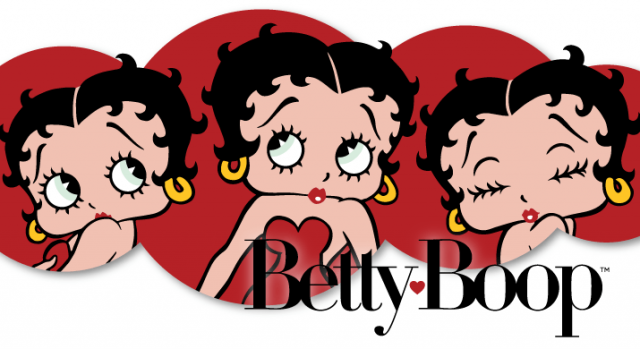Blog
Geplaatst op zaterdag 06 april 2019 @ 12:57 door Marilyn_Presley , 2254 keer bekeken

Betty Boop
The cartoon vixen was an unlikely candidate for a lawsuit—and for popularity. She “was never intended to be a continuing character,” says animation historian Ray Pointer, author of The Art and Inventions of Max Fleischer. In fact, the original 1932 version of Betty Boop, created by Fleischer Studios, wasn’t even human. Rather, she was a talking, singing French poodle with long, floppy ears.
Animator Max Fleischer. (Credit: Science History Images/Alamy Stock Photo)
But soon, Betty’s ears became earrings and she was reinvented as a human being. The new Betty Boop was a vivacious flapper who drove a car, did popular dances and showed plenty of skin. Her wide eyes and sexy looks were a hit with audiences—as was the fact that she was a clear parody of popular singer Helen Kane. The squeaky-voiced jazz singer was known for her sexy lyrics and baby-like singing, and Betty Boop delivered a spot-on imitation.
Kane’s delivery—including her signature “boop-boop-a-doop”—was “a theatrical staple going back years,” says Pointer. Like the vaudeville performers that preceded her, Kane used her little-girl voice to deliver lyrics that would have been shocking in the mouth of another singer.
The New York Times called her “the most menacing of the baby-talk ladies”—a reference to a vaudeville phenomenon also used by performers like Fanny Brice and Irene Franklin. Two years before Betty Boop’s debut, Kane had skyrocketed to fame with the song “That’s My Weakness Now,” which used the phrase “boop-boop-a-doop” as shorthand for sex.
The original caption to these images claimed that Betty Boop was based on Helen Kane, before the lawsuit in May.
Audiences would have recognized the send-up of Kane, now a Paramount star. But so did Kane herself—and when she experienced economic hardship due to a layoff, she took legal action against the animation studio. She sought $250,000 in damages and no further showings of Betty Boop cartoons—and claimed that phrases like “boop-boop-a-doop, boop-boopa doop, or boop-boopa-do, or boop-a-doop or similar combinations of such sounds or simply boop alone” were her own—part of what she called her “baby vamp” act.
But Max Fleischer, the animation pioneer who owned the studio, didn’t back down. He brought three women to court who had voiced Betty Boop—each of whom claimed they hadn’t imitated Kane and did their Betty Boop voices to prove it. The judge watched footage of Fleischer cartoons and Kane performances.
Eventually, says Pointer, “the court stenographer threw up his hands. Some of the testimony became almost hilarious.” The press had a field day with the concept of a performer attempting to protect her popular “boops.”
It seemed like Kane had a legitimate case—and her lawsuit made it all the way to the New York Supreme Court. But it stalled there, thanks to the origins of her signature sound. The Fleischers trotted out a number of witnesses who claimed they’d heard “boops” and baby talk in nightclubs, cabarets and vaudeville theaters before Kane became famous.

The Betty Boop Show, 1971. (Credit: AF archive / Alamy Stock Photo)
And then came talk of Baby Esther, the stage name of an African-American performer named Esther Jones. Baby Esther’s manager claimed that Kane and her manager had seen Jones perform in 1928, then copied her style. This was corroborated by Kane’s manager, says Pointer. Baby Esther herself was not available to testify, presumably because she was dead. But Fleischer Studios provided a screen test—now lost—of Jones that convinced the judge Kane had copied the singer.
To this day, there are no confirmed photos or recordings of Jones, and Jones herself never testified in the lawsuit. Nevertheless, says Pointer, “It was just so silly they wanted to get on with it,” bringing the lengthy lawsuit to a close without staging a widespread search for Jones. Kane lost the case, and Betty Boop kept on booping. A vindictive Max Fleischer even gathered his Betty Boop voice actors on camera to make fun of the lawsuit during a newsreel—and not long after, Betty Boop herself appeared in a cartoon called “Betty Boop’s Trial.”
As for Kane, she faded from popularity. When she died in 1966, the New York Times recalled her as a “once giggly, wiggly brunette”—and told the story of how she squandered her fortune on a failed clothing company.
(Moviestore collection Ltd/Alamy Stock Photo)
A Boop-related lawsuit may have seemed silly, but it pointed to the outrageous popularity of Betty Boop. Her sexually suggestive dancing, squeaky voice and seductive costume, complete with garter, captivated audiences. Her songs were racy enough to raise eyebrows, but not explicit enough to make the cartoons unacceptable. “That’s why they were fun,” says Pointer. Even though she was given a more modest makeover after the passage of the Hays Code in 1934, she stayed popular until she was discontinued in 1939. The dog-turned-doll-like heroine has lived on through syndication and merchandising since television’s early days.
Though the flapper age was over by the time Betty Boop took to the screen, she was beloved by Depression-era audiences. “The public embraced her because [she] reminded them of the carefree days of the 1920s,” says Pointer. And as the most unique human woman cartoon character of her day, she became a fan favorite.
For Pointer, she’s important for another reason: her music. “The cartoons helped to promote and expose the public to jazz and swing,” he recalls. And Betty Boop’s cartoons help preserve America’s long-gone vaudeville tradition—one that was based, in large part, on the contributions of unacknowledged African-American performers.(www.history.com/news/the-people-v-betty-boop)
Plaats een reactie
Je moet ingelogd zijn om een reactie te mogen plaatsen. Klik hier om in te loggen.





Reacties
Er zijn nog geen reacties geplaatst.